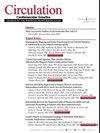Commercially Available Human-Induced Pluripotent Stem Cell-Derived Cardiomyocytes: Another Piece in Our Tool Box, but Not a Swiss Army Knife Yet.
引用次数: 0
Abstract
KCNJ2 encodes the pore-forming α-subunit of the Kir2.1 inward-rectifier potassium channel, the main determinant of the current (I K1 ), which is responsible for the final repolarization phase of the ventricular action potential, as well as a stable resting membrane potential in the working myocardium. Variants in the KCNJ2 gene have been associated with familial atrial fibrillation (gain of function), short-QT syndrome (gain of function), catecholaminergic polymorphic ventricular tachycardia; loss of function), as well as the Andersen–Tawil syndrome (ATS; loss of function). ATS is a rare hereditary multisystem disorder leading to periodic paralysis, dysmorphic features, and ventricular arrhythmias. Penetrance of the disease is extremely variable, and not all patients present with the full triad of symptoms. Regarding the cardiac phenotype, these patients present with frequent polymorphic ventricular contractions and bidirectional ventricular tachycardia. Typically, these arrhythmias are present at rest and disappear during exercise. This is an important differentiation from catecholaminergic polymorphic ventricular tachycardia, which also presents with bidirectional tachycardia, but typically during catecholaminergic stimulation or exercise. ATS patients frequently show prominent U waves in the ECG, and some also show prolongation of the corrected QT interval. Although QT prolongation is not a typical sign, ATS was classified as LQTS-subtype (LQT7).商业上可获得的人类诱导的多能干细胞衍生的心肌细胞:我们工具箱中的另一块,但还不是瑞士军刀。
本文章由计算机程序翻译,如有差异,请以英文原文为准。
求助全文
约1分钟内获得全文
求助全文
来源期刊

Circulation: Cardiovascular Genetics
CARDIAC & CARDIOVASCULAR SYSTEMS-GENETICS & HEREDITY
自引率
0.00%
发文量
0
审稿时长
6-12 weeks
期刊介绍:
Circulation: Genomic and Precision Medicine considers all types of original research articles, including studies conducted in human subjects, laboratory animals, in vitro, and in silico. Articles may include investigations of: clinical genetics as applied to the diagnosis and management of monogenic or oligogenic cardiovascular disorders; the molecular basis of complex cardiovascular disorders, including genome-wide association studies, exome and genome sequencing-based association studies, coding variant association studies, genetic linkage studies, epigenomics, transcriptomics, proteomics, metabolomics, and metagenomics; integration of electronic health record data or patient-generated data with any of the aforementioned approaches, including phenome-wide association studies, or with environmental or lifestyle factors; pharmacogenomics; regulation of gene expression; gene therapy and therapeutic genomic editing; systems biology approaches to the diagnosis and management of cardiovascular disorders; novel methods to perform any of the aforementioned studies; and novel applications of precision medicine. Above all, we seek studies with relevance to human cardiovascular biology and disease.
 求助内容:
求助内容: 应助结果提醒方式:
应助结果提醒方式:


